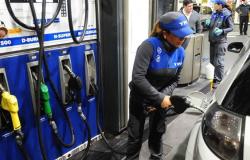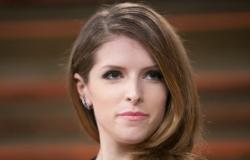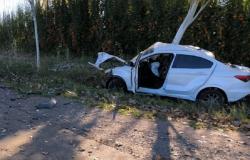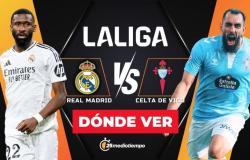Image source, Getty Images
- Author, Jemma Crew
- Author’s title, BBC News
-
1 hour
The film “Conclave” of 2024, a box office and winner of an Oscar, tells the story of a papal choice without a clear favorite. For many, it was a look at the dense world of the Vatican and the hermetic choice process of the leader of the Catholic Church.
On Wednesday, May 7, fiction will become real when 134 Cardinals begin the process of choice of Pope Francis, who died on April 21 at age 88.
As those who have seen the film know, the papal conclave will be held completely behind closed doors in the Sistine Chapel, under the world famous Fresco de Miguel Ángel.
No one outside the Vatican will know the result until a column of white smoke leaves its fireplace, which will mean that the Catholic Church has a new leader.
But what does the film tell us about how the conclave could develop and why is the process so fascinating?
1. A process not quite closed
Adapted from Robert Harris’s novel, “Conclave” shows the cardinals isolating themselves in the Vatican during the choice process.
They are not allowed to communicate with anyone outside the conclave, although, given the practical circumstances, they are not completely removed.
“Everyone needs to feed; they are not completely removed from the world,” says Stephen Bullivant, professor of theology and sociology of the religion of the University of St Mary’s Twickenham, in London.
This self -imposed isolation is a tradition that dates back to centuries.
In part, it seeks to prevent voters from being influenced by external factors, although the idea of a closed -door process may seem contradictory to the “approach to the modern world of transparency, visibility and scrutiny,” according to Anna Rowlands, professor of Catholic social thought and social practice at the University of Durham, England.
The film evokes “an incredible introspective atmosphere” and a feeling of retirement from the world, he says.
“I find it hard to imagine a more intense responsibility and feeling than being locked in a conclave,” he adds.
Image source, Getty Images
2. The altercations
On the screen, claustrophobic and intense deliberations, strategic meetings and tactical maneuvers abound.
A cardinal Socava a favorite candidate to improve his own possibilities. Others, with improbable perspectives, urge their supporters to change their vote.
This conflict of interests and ideologies in struggle provides much of the film’s drama.
“It is essentially about the political machinations that take place,” Nick Emerson, a film editor, told the BBC earlier this year.
While some cardinals will think that the most important thing is to follow the divine guide, others will feel anxious to make a quick decision, says Tina Beattie, an emeritus professor of Catholic studies at the University of Roehampton, England.
Since the health of Pope Francis was delicate for some time, it is likely that, even before the conclave, “there has already been a lot of politicians and struggles for positions between racks,” he adds.
“There will be many altercations and not all [los cardenales] They will agree. “
Although in the film some of the most tense scenes focus on the vote, in reality much of the drama could arise in the meetings of the days before the official start of the conclave.
During this time, participants will be known, define their priorities and learn to work together to reach a unified decision, explains Professor Rowlands.
Image source, Pa Media
3. An unpredictable choice
In the film, an unknown cardinal, secretly appointed by the late Pope, is thrown into the contest.
In real life, this would not be possible. Although theoretically any baptized Catholic male is eligible to be appointed Pope, all the cardinals who vote in the conclave should have been publicly appointed by a previous Pope.
That said, the imminent choice could be one of the most unpredictable in history.
About 80% of the Voting Cardinals were appointed in the last 12 years by Pope Francis. He consciously chose people around the world and with various political backgrounds.
Many of the cardinals designated by Francisco come from developing countries, “places and contexts where cardinals are not normally named,” says Professor Rowlands.
This adds a level of uncertainty in terms of its priorities and its final decision.
4. Modern cardinals
The film presents the cardinals as fallible human beings that compete for power.
Director Edward Berger told the BBC last year that, although the conclave is considered “an ancient spiritual ritual,” he wanted to bring participants closer to modernity.
“We have placed them on a pedestal, but when you look more closely, it is people who have mobile phones, who smoke, who have the same problems, vices and secrets as us.”
Professor Rowlands explains that the film offers a look at what is behind a process, with all the elements of nature and human life present: “Loss, pain, ambition, fear, temptation, courage.”
And he adds: “A conclave is something very, very human … It has a divine purpose, but it is something very human.”
Subscribe here To our new newsletter to receive every Friday a selection of our best content of the week.
And remember that you can receive notifications in our app. Download the latest version and act.





